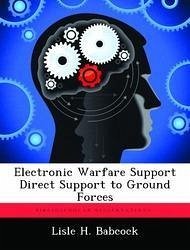The advancement of aerial reconnaissance drastically changes the face of war and is a keystone to modern day operations. Without the use of real-time aerial reconnaissance, the lack of near real time, actionable information severely hampers the effectiveness of the U.S. military. Command and Control, Intelligence, Surveillance and Reconnaissance (C2ISR) make up the backbone of battle management and situational awareness that is required in today's wars. The major limiting factor in aerial reconnaissance is the ability to provide real-time, actionable intelligence directly to the ground forces, in an expeditious manner. ES platforms are low-density/high-demand (LDHD), and due to the unending desire and requirement for ISR support, there are not enough assets. As a result, strategic planners divvy out the ES platforms to support the ISR mission in a prioritized manner. Maximizing the capabilities and decentralized execution of electronic warfare support (ES) platforms will enable a more effective, real-time dissemination of pertinent actionable intelligence directly to the ground commander, in support of irregular warfare. This paper outlines how the advancement of reconnaissance has changed not only the tactical nature of warfare, but also the way the United States and her allies wage war. This paper discusses numerous authors and their thoughts on how reconnaissance has changed the face of war, and then applies thought on how to better utilize reconnaissance to fight war today. The paper covers recommendations to increase the direct support roles of ES platforms. Finally, the paper summarizes the recent trends in reconnaissance missions and forecast how the ES role will affect current and future conflict. This work has been selected by scholars as being culturally important, and is part of the knowledge base of civilization as we know it. This work was reproduced from the original artifact, and remains as true to the original work as possible. Therefore, you will see the original copyright references, library stamps (as most of these works have been housed in our most important libraries around the world), and other notations in the work. This work is in the public domain in the United States of America, and possibly other nations. Within the United States, you may freely copy and distribute this work, as no entity (individual or corporate) has a copyright on the body of the work. As a reproduction of a historical artifact, this work may contain missing or blurred pages, poor pictures, errant marks, etc. Scholars believe, and we concur, that this work is important enough to be preserved, reproduced, and made generally available to the public. We appreciate your support of the preservation process, and thank you for being an important part of keeping this knowledge alive and relevant.
Bitte wählen Sie Ihr Anliegen aus.
Rechnungen
Retourenschein anfordern
Bestellstatus
Storno








